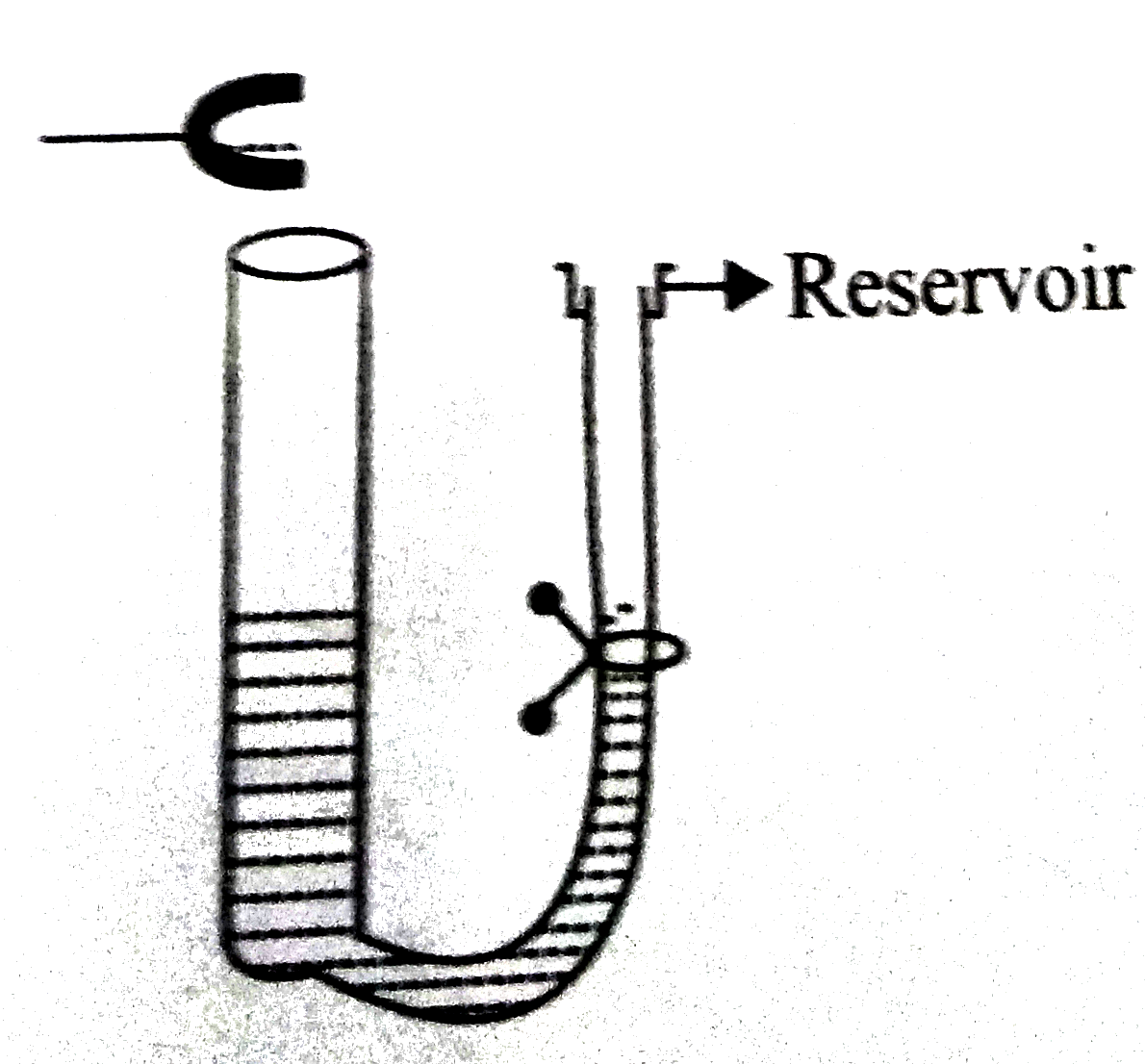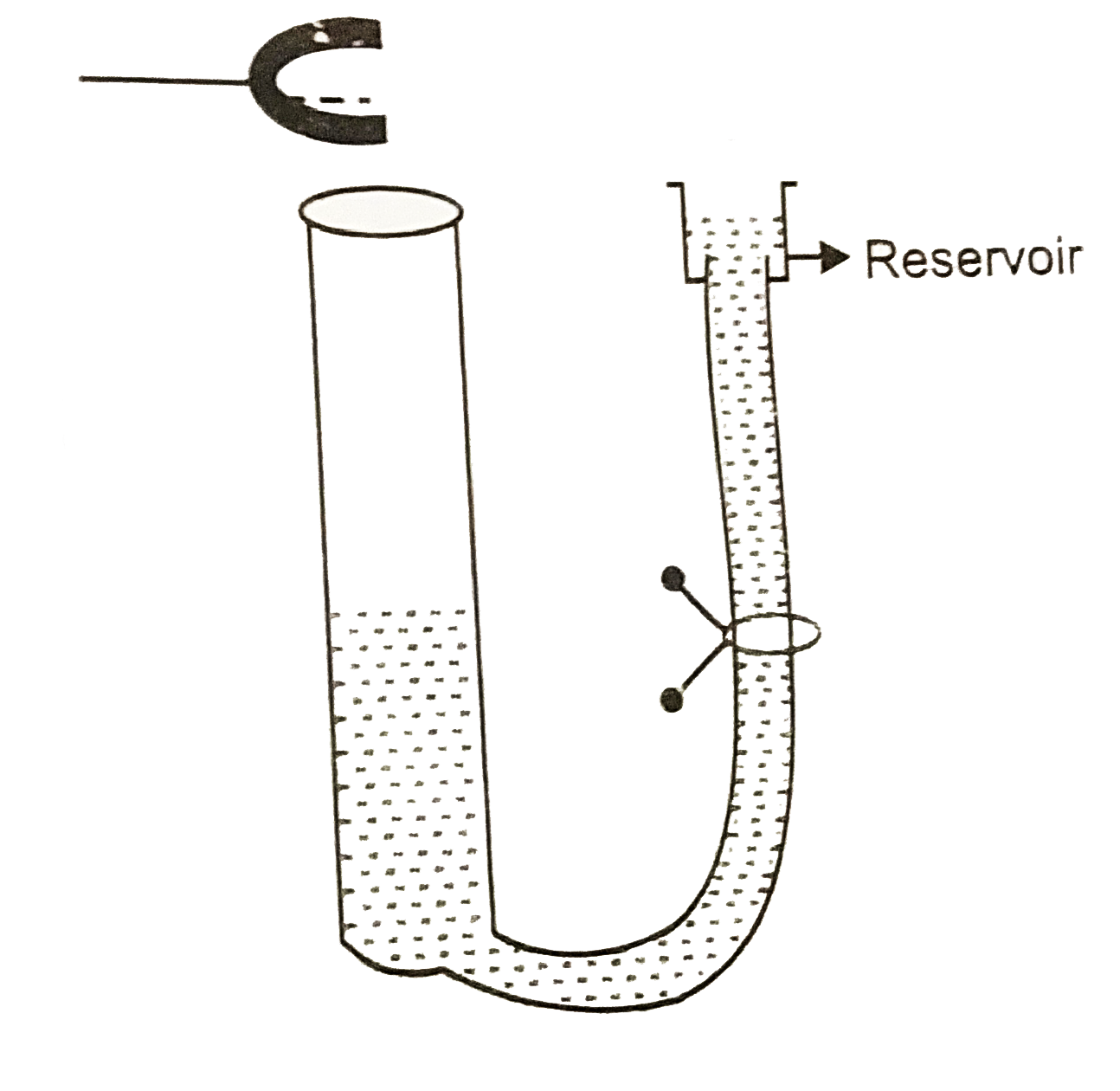A tuning fork whose natural frequency is 440HZ is placed just above the open end of a tube that contains water. The water is slowly drained from the tube while the tuning fork remains in place and is kapt vibrating. The sound is found to be echanced when the air column is 60cm long and when it is 100cm long . Find the speed of sound in air.
To find the speed of sound in air using the information provided, we can follow these steps:
Step 1: Identify the resonant lengths
The problem states that resonance occurs at two lengths of the air column:
- First resonance at L1=60cm
- Second resonance at L2=100cm
Step 2: Calculate the change in length
The change in length of the air column when resonance occurs is given by:
ΔL=L2−L1=100cm−60cm=40cm
Step 3: Relate the change in length to the wavelength
In a tube open at one end, the resonant lengths correspond to odd multiples of quarter wavelengths. The change in length between two successive resonances is equal to half the wavelength (λ/2):
ΔL=λ2
Thus, we can express the wavelength as:
λ=2ΔL=2×40cm=80cm
Step 4: Convert the wavelength to meters
To convert the wavelength from centimeters to meters:
λ=80cm=0.8m
Step 5: Use the frequency to calculate the speed of sound
The speed of sound v can be calculated using the formula:
v=f⋅λ
where f is the frequency of the tuning fork. Given that f=440Hz:
v=440Hz×0.8m=352m/s
Final Answer
Thus, the speed of sound in air is:
352m/s
---
The problem states that resonance occurs at two lengths of the air column:
- First resonance at L1=60cm
- Second resonance at L2=100cm
The change in length of the air column when resonance occurs is given by:
ΔL=L2−L1=100cm−60cm=40cm
In a tube open at one end, the resonant lengths correspond to odd multiples of quarter wavelengths. The change in length between two successive resonances is equal to half the wavelength (λ/2):
ΔL=λ2
Thus, we can express the wavelength as:
λ=2ΔL=2×40cm=80cm
To convert the wavelength from centimeters to meters:
λ=80cm=0.8m
The speed of sound v can be calculated using the formula:
v=f⋅λ
where f is the frequency of the tuning fork. Given that f=440Hz:
v=440Hz×0.8m=352m/s
Thus, the speed of sound in air is:
352m/s
Topper's Solved these Questions
- SOUND WAVESBOOK - DC PANDEY ENGLISHCHAPTER - SOUND WAVESEXERCISE - Subjective Questions
1 Videos
- SOUND WAVESBOOK - DC PANDEY ENGLISHCHAPTER - SOUND WAVESEXERCISE - Level 2 Single Correct
14 Videos
- SOUND WAVESBOOK - DC PANDEY ENGLISHCHAPTER - SOUND WAVESEXERCISE - Level 1 Objective
34 Videos
- SOLVD PAPERS 2017 NEET, AIIMS & JIPMERBOOK - DC PANDEY ENGLISHCHAPTER - SOLVD PAPERS 2017 NEET, AIIMS & JIPMEREXERCISE - Solved paper 2018(JIPMER)
38 Videos
- SUPERPOSITION OF WAVESBOOK - DC PANDEY ENGLISHCHAPTER - SUPERPOSITION OF WAVESEXERCISE - Level 2 Subjective
8 Videos
Similar Questions
Knowledge Check
A tuning fork vibrating with a frequency of 500 Hz is kept close to the open end of a tube filled with water, as shown in figure. The water level in the tube is gradually lowered When the water level is 17 cm below the open to open end, maximum intensity of sound is heard. If the room temperature is 20∘ C, the speed of sound in air at the temperature is
 A1. 330ms−1B2. 340ms−1C3. 350ms−1D4. 360ms−1
A1. 330ms−1B2. 340ms−1C3. 350ms−1D4. 360ms−1A tuning fork of frequency 440 Hz resonates with a tube closed at one end of length 18 cm and diameter 5 cm in fundamental mode. The velocity of sound in air is
A1. 336ms−1B2. 343ms−1C3. 300ms−1D4. 350ms−1A resonance air column shows resonance with a tuning fork of frequency 256 Hz at column lengths 33.4 cmand 101.8 cm. find (i) end-correction and (ii) the speed of sound in air.
A1. 300ms−1B2. 250ms−1C3. 390ms−1D4. 350ms−1
A tuning fork is vibrating in air. State whether the vibrations are natural or damped ?
View SolutionA tuning fork of frequency 500HZ is sounded on a resonance tube . The first and second resonances are obtained at 17cm and 52cm . The velocity of sound is
View SolutionA tuning fork vibrating with a frequency of 512 Hz is kept close to the open end of a tube filled with water , figure. The water level in the tube is gradually lowerd. When the water level is 17cm below the open end, maximum intensity of sound in heard. If the room temperature is 20∘C, calculate
(a) speed of sound in air at room temperature.
(b) speed of sound in air at 0∘C
(c) if the water in the tube is replaced with mercury, will there be any difference in your observations?

View SolutionTwo tuning forks AandB give 18beatsin2s. A resonates with one end closed air column of 15cm long and B with both ends open column of 30.5 long. Calculate their frequencies.
View SolutionA tuning fork of frequency n is held near the open end of tube, the tube is adjusted until resonance occurs. If the two shortest lengths to produce resonance are L1andL2 , then the speed of the sound is
View Solution
